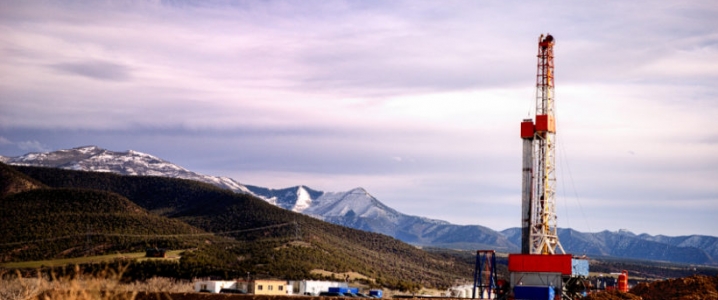The OPEC+ cuts still are not doing very much to boost oil prices, dashing hopes for many U.S. shale producers. With companies in the process of formulating their budgets for 2019, the prospect of $50 oil sticking around raises questions about the heady production figures expected from the shale patch.
The IEA expects U.S. oil production to grow by 1.3 million barrels per day (mb/d) in 2019. But oil prices could significantly impact those projections. “Total U.S. shale oil growth is highly sensitive to WTI prices in the $40-60 range,” Morgan Stanley wrote in a December 13 note. The investment bank said that shale producers are growing more sensitive to prices below $60 but less sensitive to price spikes above $60. “If WTI remains around current levels (~$50/bbl), US growth should start to slow.”
The investment bank said that larger companies, such as ConocoPhillips or Occidental Petroleum, are less sensitive to price swings than smaller E&Ps. On the other hand, some companies could begin to slow production if prices linger at low levels. Morgan Stanley pointed to Apache Corp., Murphy Oil, Newfield Exploration, Oasis Petroleum, Whiting Petroleum and Chesapeake Energy. “With low oil prices, we see these companies slowing production growth in 2019 to spend within cash flow (or minimize outspend), [free cash flow] levels fall or turn negative, and leverage metrics move higher.” Related: Equinor Starts Up Major Gas Field In Norwegian Sea
Other analysts also see price sensitivity from the shale sector. “We expect 5-10% capex growth on average at $59 WTI, which should yield production growth of nearly 1.3mn b/d,” Bank of America Merrill Lynch wrote in a note. “However producers may budget for lower oil prices given the recent decline in prices and increase in uncertainty.”
BofAML went on to add: “We believe the $50 to $60 price range for WTI yields highly variable E&Ps budgets. In a mid to low $50s WTI scenario, producer budgets would likely come in flat to lower YoY and would likely lower US production growth to somewhere closer to 1mn b/d for next year.”
There is one major obstacle that the shale sector faced in 2018 that could start to dissipate: pipeline constraints.
U.S. shale producers and pipeline companies have deployed a variety of methods to mitigate the impact of pipeline constraints.
The higher-than-expected production figures from U.S. shale this year largely come down to the ability of producers and pipeline companies to work around the swelling bottleneck, particularly in the Permian. Pipeline operators have used drag reducing agents to speed up the flow of oil through the lines, allowing them to ship more oil than the nameplate capacity suggests. Also, the Plains All American Sunrise pipeline came online ahead of schedule, which also relieved some congestion. No major outages occurred in 2018, which has been “an element of luck” given the high throughput rates, the IEA said in its Oil Market Report.
More projects are set to come online in 2019, which should reduce the pressure on oil producers. The Bridgetex and the Sunrise expansions will add 40,000 and 175,000 bpd in the first half of 2019, respectively. Another 100,000 bpd will come from the Cactus 2, while Enterprise Products Partners could add 200,000 bpd by converting a natural gas liquids pipeline to crude oil. Related: These Countries Found The Most Oil In 2018
That should be close to enough to avoiding production impacts. “Takeaway capacity growth will therefore closely track output growth in the Permian, but it will still lag behind until the second half of 2019, when the 675 kb/d EPIC project comes online,” the IEA said.
To be sure, the midstream challenges are not entirely resolve just yet. Pipeline “congestion at the Cushing hub should persist during 1H19, keeping pressure on WTI timespreads and differentials to Brent relatively wide,” Bank of America Merrill Lynch said in a note.
Also, the margin is tight – the multiple pipeline projects slated for operation in 2019 need to stay on schedule, while the midstream sector needs to avoid any unexpected outage. “Operators can ill afford major pipeline or refinery shutdowns during that time, as this would only exacerbate the shortage,” the IEA cautioned.
However, by the end of 2019, there will be very few midstream constraints holding back the shale industry. New planned export terminals will also clear the path for oil to be shipped overseas in ever rising volumes. “[P]ipeline and export projects slated for completion by 2020 should unchain North American oil production growth early in the next decade,” Bank of America Merrill Lynch wrote.
By Nick Cunningham of Oilprice.com
More Top Reads From Oilprice.com:
- U.S. Becomes Net Oil Exporter For First Time In 75 Years
- 2019 Will Be A Wild Year For Oil
- Is This The Next Big Petrochemical Hub In The U.S.?


















The first is that the US shale oil industry is not judged by standard criteria of economics and profit otherwise it would have been declared bankrupt years ago given the hundreds of billions of dollars it owes Wall Street. It has to keep producing irrespective of oil prices just to remain afloat. In other words, the US shale industry works on the principle of “robbing Peter to pay Paul” supported by Wall Street investors.
The second reason is that despite being very deeply in debt, the US shale oil industry will continue operating because it gives the United States a say in the global oil prices and markets along with Russia and Saudi Arabia. Without that, the US Energy Information Administration (EIA) will not be able to hype about the US becoming the world’s top oil producer or the US is now a net oil exporter.
However, it does give the United States the ability to manipulate oil prices by falsifying claims about rises in US oil output and significant build-up of US crude and product inventories.
Dr Mamdouh G Salameh
International Oil Economist
Visiting Professor of Energy Economics at ESCP Europe Business School, London